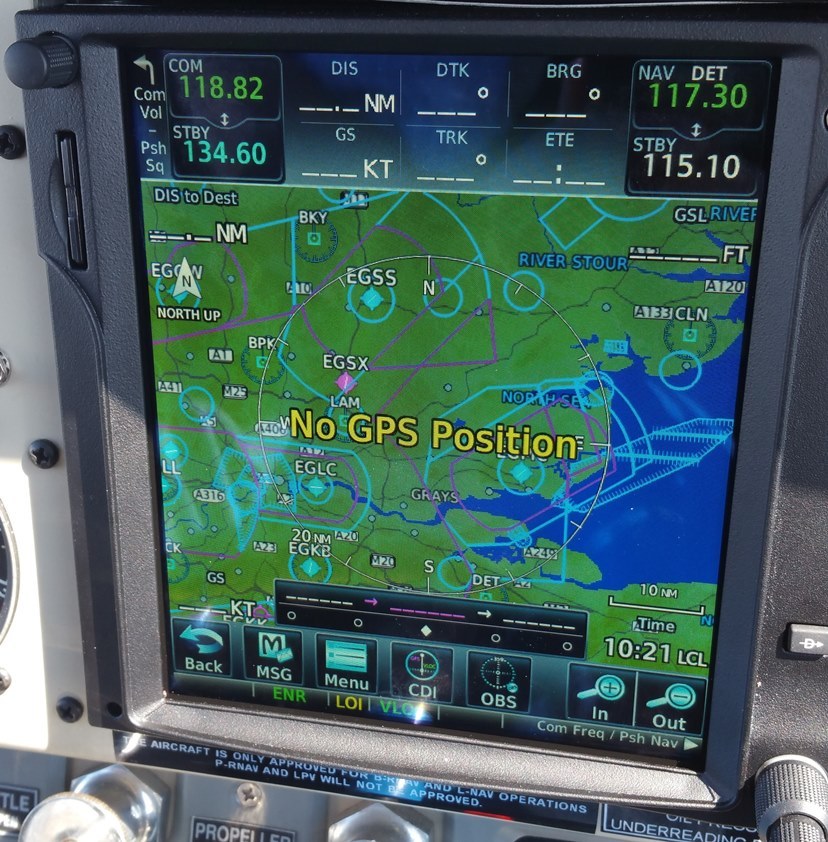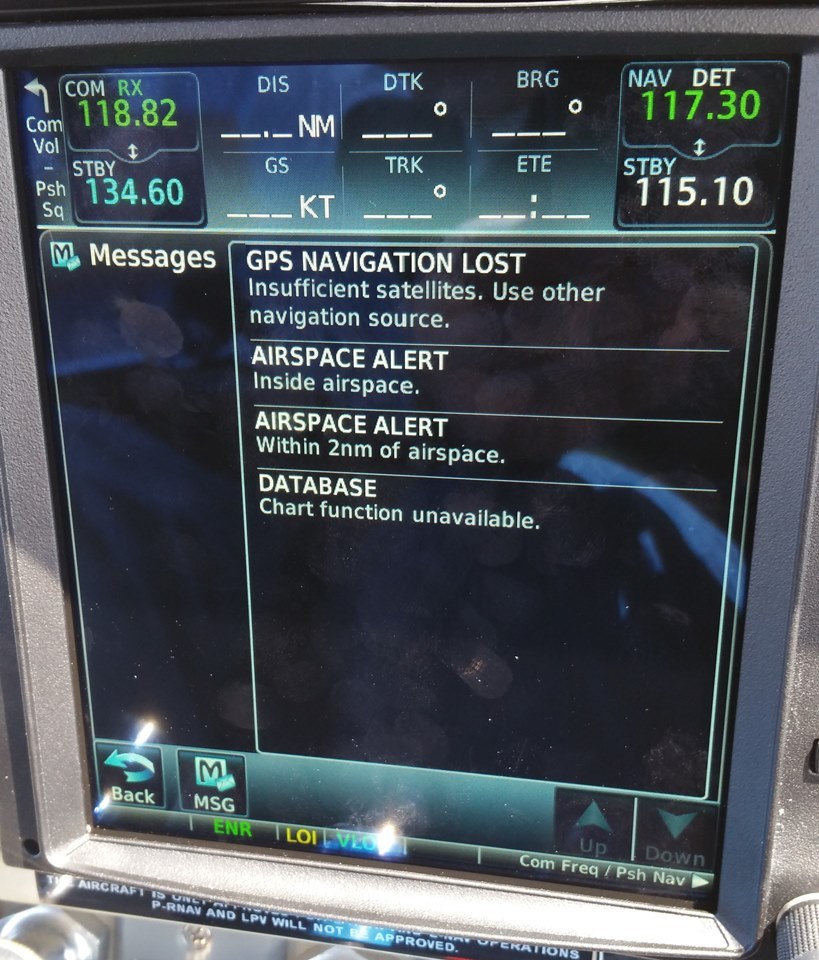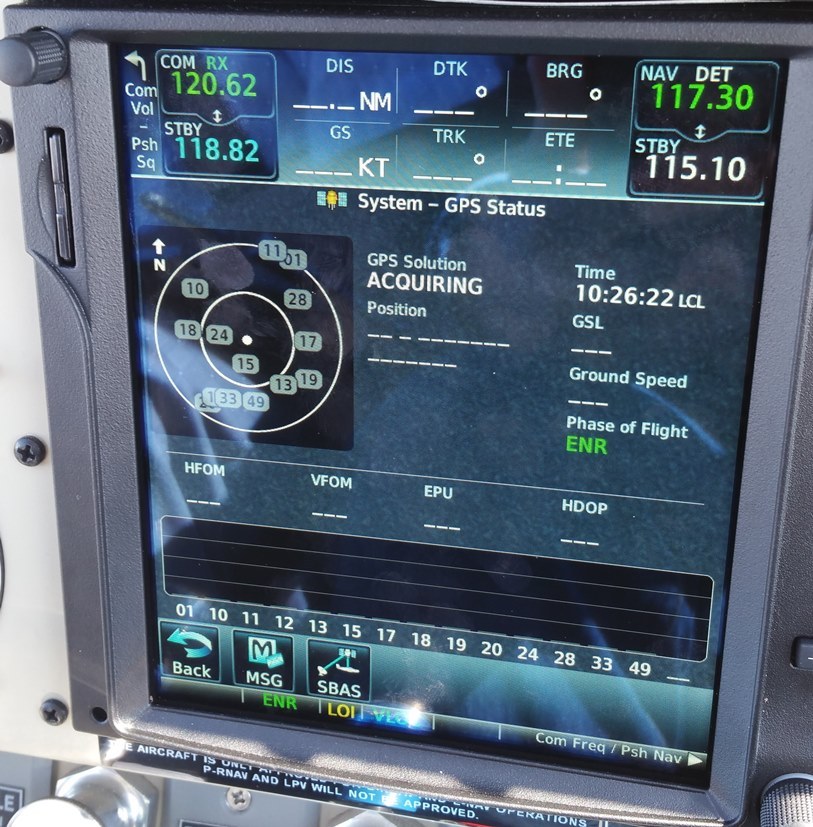AnthonyQ
A GPS / VOR /DME with optional Loran C unit was built and marketed by Narco some years back as the Narco STARNAV however GA failed to understand this multi-Sensor unit and as always driven by price ( just like those who don’t want to fit a DME) the GA market turned to stand alone GPS.
Is the Kirkwall VOR one of the VOR that will be getting the chop in the UK? and therefore they have used the NDB.
As a side note as an FI at both an ATO and registered Facility. I’m a big fan of NDB approaches. We can practice them as many times as we like, whenever we like (no silly beacon slots required) and they are all free using the local AM radio transmitter!
Not sure it would be first choice if I had to do one for real mind.
Higher end bizjets and airliners can fly nonprecision approaches (no glideslope, not even a +V which BTW is going to exist only on a GPS approach) with vertical guidance computed by the FMS.
Loads of threads on here already on this.
One German AOC (bizjets) operator reported that the LBA didn’t allow it on most of their fleet.
It may be a implemented as a GPS overlay on the bizjets (and thus a de facto +V) although I doubt it. The databases are still Jepps and I don’t see Jepp drafting a +V for a non-GPS IAP. It is thus most likely a baro derived GS. The lateral guidance will come from whatever the FMS uses which is GPS on all but the top bizjets, and INS on the stuff above.
Anyway, pop down to Southampton EGHI and listen on 120.225, to all the airliners flying the NDB (yeah right) approach. They ask for the NDB IAP officially but the approach is coupled all the way down to the MDA.
A_and_C wrote:
There is a huge slice of opinion on this forum that GPS is infallible and that the only reason you will go around will be as a result of weather or a blocked runway……………… Well guys what you going to do in the event of a failure of the part of the GPS that lives in orbit ? Or your single LVP GPS box ? Or a simple loss of RAIM ?
I have to agree with A_and_C here. There are several failure modes which will downgrade or disable the GPS receiver. On some failure modes a backup GPS wouldn’t help, as that GPS would also be disturbed.
Some examples I have actually seen:
- GPS loss on during transmit on VHF COM. Harmonics prevent the weak GPS signal from being received. Sometimes this issue is gone when PTT is released. This should be part of the checkout of every COM installation, but is frequently overlooked. This would possibly also disable other GPS receivers onboard
- GPS loss when VHF COM receiver is on. This is far less common, but similair as above.
- GPS loss due to re-radiating ELT or oscillating ELT or ELT antenna. Same as above. On some occasions signals are caused by the ELT itself.
- GPS loss due to U/S GPS antenna amplifier, where it oscillates such that the failing unit also blocks other receivers.
- GPS loss due to poorly crimped coax cables
- GPS loss due to poor quality GPS antenna (one manufacturer had quite some issues)
- GPS loss due to hardware / software / bugs (this will only take out one GPS, examples are discussed before).
A_and_C wrote:
I can’t understand why those of you who own aircraft are so reluctant to carry an ADF box, they are light, reliable, don’t take much panel space and some of them even have Superflag output to make them safer for your EFIS systems.
I agree. For those having ADF / DME I would recommend to keep them in the panel, even when GPS as primary navigation.
Timothy wrote:
but I think that DME is vital, and that confusions resulting from GPS substitution of DME is a killer.
This point is often misunderstood IMHO.
Are there any approaches in the USA that use NDBs in the MAP? I have not flown extensively in the USA except in sims, but all the GPS approaches I have come across use GPS for the missed. Statistics from the USA would seem to suggest GPS only approaches are safe.
I seem to recall that rather than concern over the reliability of GPS, there is some technical reason that seems to suggest that NDBs are notionally more precisely located, or can facilitate an easier approach design due to some arcane rules
From about a week ago:



A_and_C wrote:
There is a huge slice of opinion on this forum that GPS is infallible and that the only reason you will go around will be as a result of weather or a blocked runway……………… Well guys what you going to do in the event of a failure of the part of the GPS that lives in orbit ? Or your single LVP GPS box ? Or a simple loss of RAIM ?Your go around navigation has to be based on something and GPS has left the building so we need a good cheap alternative and a NDB is the answer to this requirement and of course all IFR aircraft have has one fitted for years and you all know how to use it.
May be things would have been different if you guys had understood and fitted Narco’s STARNAV multi sensor RNAV system but Oh no ! We all rush to put all the eggs in one GPS basket and an RNAV Unit that could use VOR/DME, GPS & LORAN to give you an IFR navigation solution was consigned to a historical footnote.
I don’t believe GPS is infallible, but it certainly is more reliable than other navigation means, particularly with SBAS. In the US, a WAAS GPS satisfies the regulations for sole means of IFR navigation. As far as I can tell, we have had one system wide outage of WAAS for approximately 4 hours were a software update went bad. Even during this time, the standard GPS service was fully available for approaches to LNAV minimums. That is since 2003. At one point, control over one of the WAAS satellites was lost for about a six month period. At the time there were two WAAS satellites. The rogue one drifted across the sky until it finally lost orientation to the sun and lost power, resetting it so that control from the ground was reestablished. In the mean time a third WAAS satellite was launched to backup the other two. All during this time period, LPV service was still available, but there was no backup and service was not available for portions of Alaska and Hawaii. There have been many outages of the ILS at my airport since we obtained the LPV service, but no outages of WAAS. Now the system is much more robust than the early years as we have triple redundancy of the WAAS satellites. Only one needs to be received to obtain full LPV service. The full GPS constellation is 24 satellites, but the Military has maintained 31 active GPS satellites for many years and has in orbit spares that are not being used. Unlike unaided GPS, WAAS GPS systems don’t use RAIM as the integrity data is broadcast by the WAAS satellites, so one does not need to do a RAIM evaluation prior to or during flight. Even if the integrity HPL is inadequate for LPV (40 meters), it has never failed to provide satisfactory integrity for LNAV (556 meters). This was true even during solar storms that reduced the integrity to a point that LPV approaches could not be conducted. To do a missed approach, the integrity only needs to be 1853 meters. So if you are using the SBAS to fly an LPV down to as low as 200 DH, you can be pretty confident, that even if that is not available, 1800+ meters is about as close to 100% as can be measured.
IOW, if you trust the SBAS for the approach, the missed approach integrity requirements are so minimal that anything short of a nuclear war, you can absolutely depend on GPS for the miss. In the US, most of the NDB systems are gone as are marker beacons. VOR’s are also planned to be substantially reduced to a minimum network. An ADF is useful for listening to the ball game or pointing to the location of a thunderstorm. If I am going to install a backup, it is not going to be based on 1930’s technology. I pulled my ADF from my airplane in 2000, 16 years ago.
NCYankee wrote:
I don’t believe GPS is infallible, but it certainly is more reliable than other navigation means, particularly with SBAS.
Sure. Especially the provider side of the system is much better. While the aircraft side of the system is the weak link it is very reliable.
That said, there are quite some GPS failures I have seen on the aircraft side. See other post.
I do not know what was the cause on the photo from Timothy, but it clearly shows that GPS can fail inflight. Having a second GPS is not always the answer. From that point of view I think A_and_C has valid arguments.
He only has a valid argument if he presents real risk numbers.
So – can anyone please point out an accident – ANY accident. – where failure of GPS used as sole navigation aid was a cause or contributing factor?
You can make the theoretical argument for almost anything if you want to be at zero risk. A lot of very bad regulation has been written because of this attitude. We should hold everyone forcing us to do something – or suggesting it – to account to back their regulation and proposals with numbers.
I am not saying there werent any. But I am not the one trying to force others to spend money (thousands) on buying and maintaining obsolete navigation equipment.
Cobalt,
The argument for DME is not to do with loss of GPS, but in the common errors in interpreting it as a fix substitution aid. That was the fatality I pointed to.